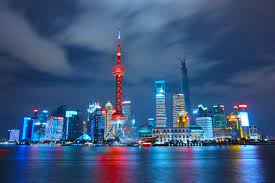China’s Expansionist Agenda: Coercion, Historical Revisionism, and Cartographic Invasion
China’s Aggressive Posture
China’s recent actions have drawn significant attention, as its expansionist agenda unfolds on multiple fronts, causing concerns among its neighbors and the global community.
Coercion and Territorial Disputes
Flashpoint in the South China Sea
China’s expansionist strategy employs coercion in territorial disputes, most notably in the South China Sea. Beijing asserts expansive territorial claims that overlap with several Southeast Asian nations, altering the strategic balance by constructing military-equipped artificial islands.
Historical Revisionism and Sovereignty
Taiwan and Hong Kong: Ongoing Struggles
China’s expansionist agenda includes historical revisionism, with a focus on Taiwan and Hong Kong. Beijing refuses to recognize Taiwan’s independence, while Hong Kong’s autonomy diminishes under the National Security Law, violating the “One Country, Two Systems” framework.
Cartographic Invasion: Altering Maps
Manipulating Geography
China’s cartographic invasion involves altering maps and geographic information to support territorial claims, changing international borders, and asserting control over disputed regions. These practices fuel tensions and hinder diplomatic efforts.
International Concerns and Responses
Global Responses to China’s Expansionism
The international community expresses varying levels of concern. The United States increases its naval presence in the South China Sea, advocating for a rules-based order. Australia, Japan, and India voice concerns over China’s expansionist behavior, emphasizing the need for international cooperation.

FAQs about China’s Expansionist Agenda : Coercion Historical Revisionism And Cartographic Invasion
Q: What is China’s expansionist agenda?
A: China’s expansionist agenda involves territorial claims backed by coercion, historical revisionism, and cartographic manipulation.
Q: What is the South China Sea dispute?
A: The South China Sea dispute involves China’s territorial claims conflicting with those of Southeast Asian nations, causing tensions in the region.
Q: How does China pressure Taiwan?
A: China refuses to recognize Taiwan’s independence and pressures international organizations to do the same.
Q: What happened to Hong Kong’s autonomy?
A: Hong Kong’s autonomy has eroded due to the implementation of China’s National Security Law, violating the “One Country, Two Systems” framework.
Q: What is cartographic invasion?
A: Cartographic invasion is when China alters maps and geographic information to assert control over disputed regions, escalating tensions.
Q: How is the international community responding to China’s expansionism?
A: Countries like the United States, Australia, Japan, and India are increasing their presence and advocating for a rules-based order while expressing concerns over China’s actions.
Conclusion
China’s expansionist agenda, marked by coercion, historical revisionism, and cartographic invasion, poses a global challenge. Diplomacy, international cooperation, and adherence to international law are vital for peaceful dispute resolution.



